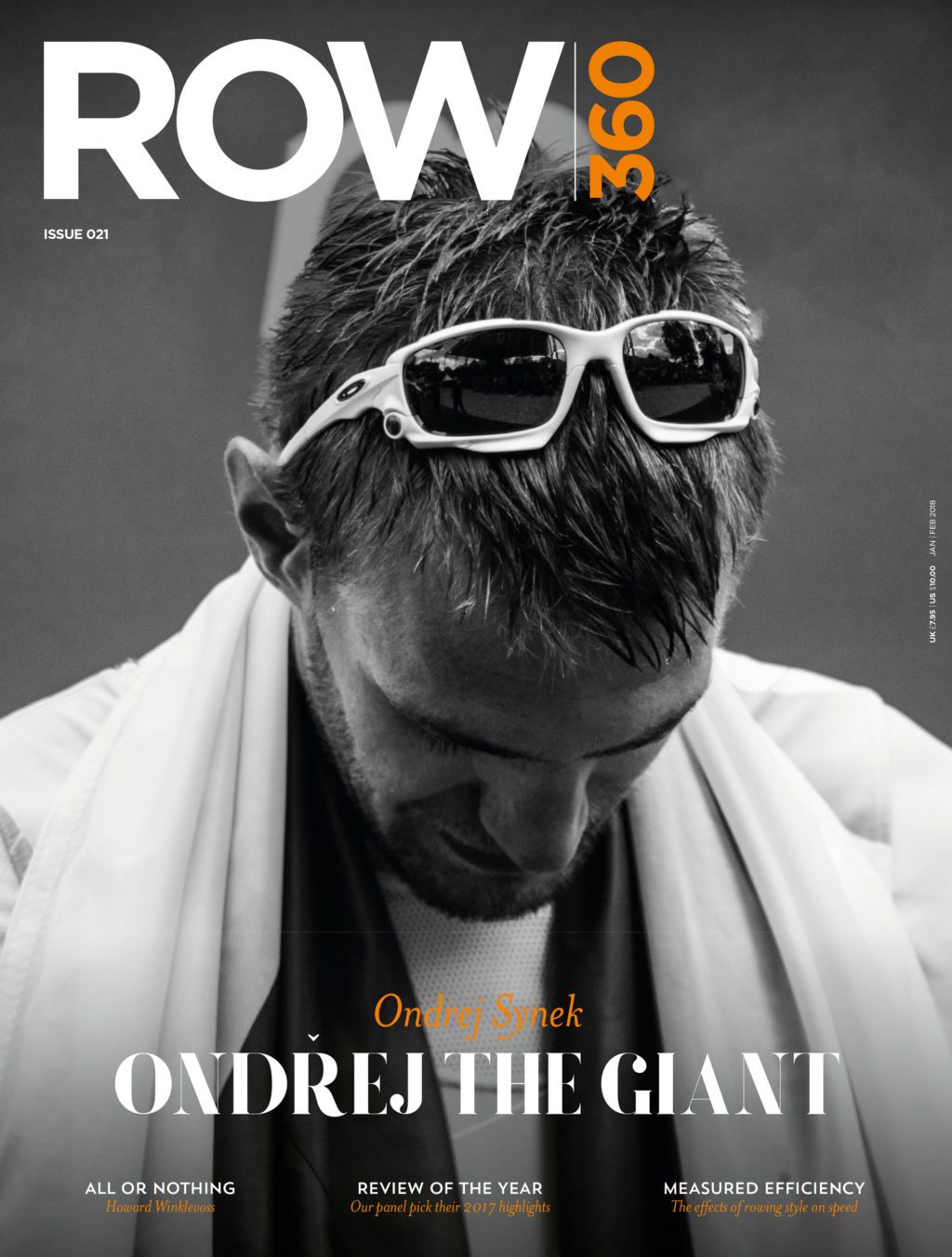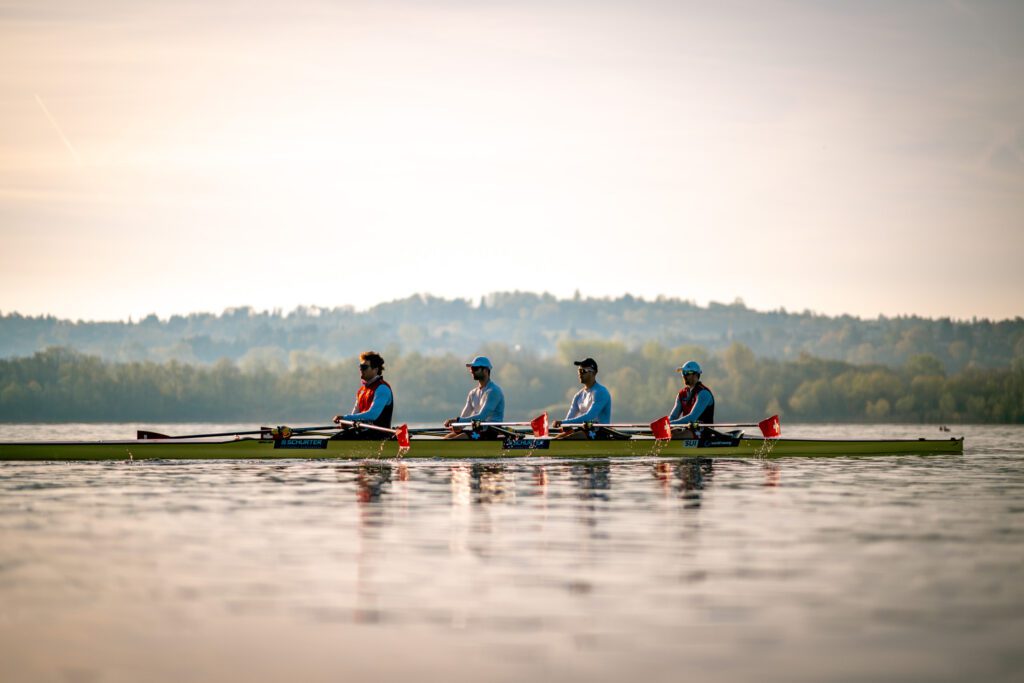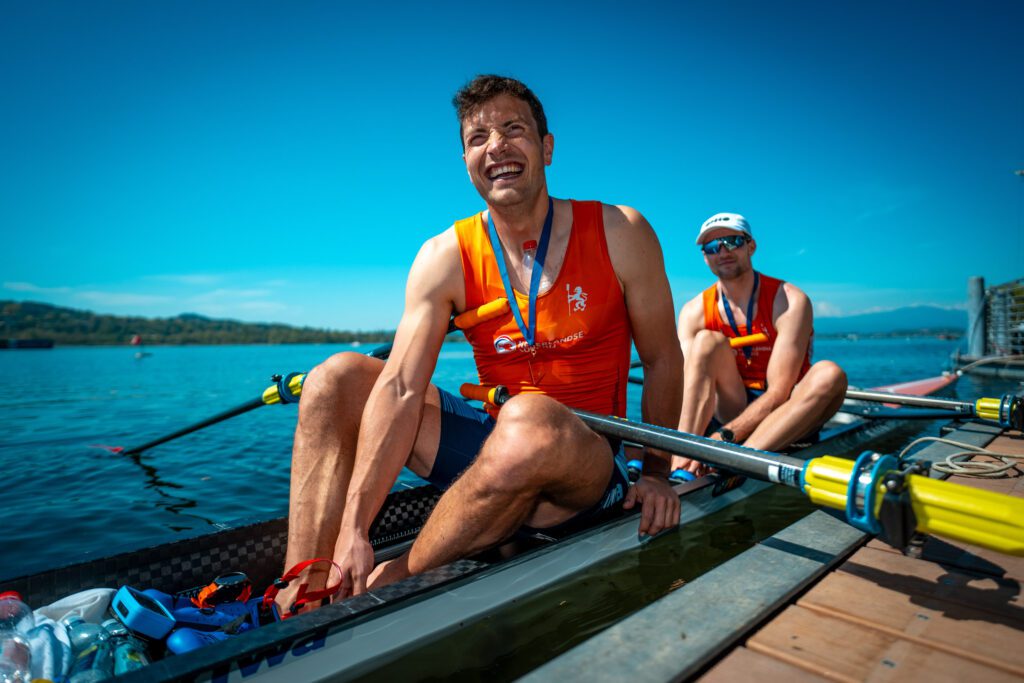When you pull a boat out of the club racks for your morning row, do you ever stop and think about who rowed before you in those shoes bolted into the boat? Research shows that maybe you should. While just the thought of some of your crew mates’ bare feet may make you feel queasy, it is an all too often overlooked issue of clubhouse or school rowing, until of course you come off the water with some form of itch or nasty looking rash. What I’m about to tell you might help bring feet and shoes closer to your attention.
Did you know that each foot has more than 250,000 sweat glands and can produce up to a cup of sweat per day (550ml)? Excessive perspiration, combined with common bacteria, can cause some fairly offensive foot odour – try poking your head into a boat near the foot stretcher some time.
“skin is most susceptible when it is warm, moist and irritated or compromised, such as with blisters or abrasions. Sound familiar rowers?”
Dr. Ed Wittich
The bacteria that grows on the soles of our feet actually create gases similar to those released by bacteria used in producing cheese – lending some truth to the description of ‘cheesy feet’.
Nail-based infections like Onychomycosis, fungal skin infections such as Tinea Pedis (Athlete’s Foot), and other bacterial foot infections have a higher prevalence in the general population than you might realise and it’s even higher in the athlete population, most likely due to sweat and a lot of bodies in close quarters.
Athlete’s Foot, also known as Ring-worm of the Foot, is one of the most common contagious foot diseases. It is a fungal infection that affects the upper layer of the skin and can be transmitted by direct contact (skin to skin) or from surface contact (shoes, floors, mats etc). The skin is most susceptible when it is warm, moist and irritated or compromised, such as with blisters or abrasions. Sound familiar rowers?
bacterial proliferation and infection effectively double in sporting environments such as locker rooms.
Dr. Ed Wittich
Studies have found that rates of bacterial proliferation and infection effectively double in sporting environments such as locker rooms. Risk factors such as common showers, lockers, saunas and swimming pools, synthetic fabrics and unventilated shoes all rank highly – and almost all of these risk factors are a feature of rowing. Added to which – we actually share the shoes we row in.
The same studies noted that in a typical case of Athlete’s Feet you may find such nasties as fecal contamination by E coli and Enterococcus and even the life-threatening Staphylococcus. Pair this with a high possibility of contact with blood or an open wound – a rower can easily have a blister form or burst during a session – is it a risk you really want to be taking?
Poorly fitting shoes, another all too common occurrence in rowing, only increases the likelihood of blisters and cuts developing.
In one study, Athlete’s Foot was noted to infect 69% of professional soccer players in a single team. This matched with about 69% of male college soccer players tested as a comparison and 43% of female college soccer players (well done girls). Non-athletes demonstrated a significantly lower infection rate of about 20%.
So, at best, almost two people in your rowing eight could carry Athlete’s Foot fungal infections and at worst, and more likely in a team of athletes, it could be as many as five in the boat. Not great odds. In a club of 200 members, statistically you could find up to 138 carriers.
Bacterial or fungal infection proliferation is influenced by a number of factors; microclimate, temperature, humidity, activity and as in all infections, individual predisposition all play a part. However, all feet have a rich natural bacterial flora and sweat is a nutrient for this. It’s not just what happens in the shoes either but what that foot has touched before it gets into the shoe and how well the individual cares for their feet. I discovered from a quick visit to a community podiatrist that footcare is not a high priority.
Good foot health is vital to overall health and can be a good indicator of general health status. The feet are connected to the rest of our bodies and so infections existing in abrasions or breaks in the skin of our feet can transfer disease to the rest of our body.
It is my strong belief that the practice of sharing shoes between all athletes is antiquated and there should be a shift – in line with all other sports – to wearing one’s own shoes.
Don’t just take my word for it:
“One of the major issues in rowing shells is the fact that most boathouses have high humidity due to the marine environment and whilst rowing, skin cells on the feet are being shed into the rowing shoe. The shoes that are strapped inside the boats permanently, rarely get the opportunity to dry out and this makes a perfect environment for fungal colonies to grow in. Break- down of the skin is a portal of entry for a bacterial infection also, so things like blisters and even small abrasions on the feet are a significant issue.”
Mr Mike Curtin B App Sc (Pod), B Ed (HMHE) Principal Podiatrist Central West Foot and Ankle Clinic
Key facts
- Up to 20-25% of the general population carry fungal foot infections. In the athlete population this can be much higher. Are you OK sharing shoes?
- Foot health is linked to general well-being – the feet are a common site for infection transmission
- Your nails are an indicator of your health but can be severely affected by fungal infection Moist, warm shoes that don’t see the light of day are an ideal environment for germs and fungus to flourish
- Foot diseases are varied in cause and prognosis and while most won’t kill you, some can lead to other nasty side effects
What will Athlete’s Foot do to me?
The skin on the foot, especially between the toes becomes itchy – there can also be sensations of stinging or burning. The skin may become dry, flaky, red or scaly. Athlete’s Foot typically develops between our toes and occasionally on other parts of our feet. In severe cases there may be cracking of the skin which can be painful and exposes the patient to further infections.
If left untreated, there is a risk that the infection spreads across the whole foot or onto other regions of the skin.
How do I treat it?
Many medications are available to treat this disease – some in the form of powders or foot washes and it is key to keep the feet as dry as possible when infected.
Treatment for Athlete’s Foot should generally be continued for four weeks, or at the very least for one week, after all of the skin symptoms have cleared. More advanced or resistant cases of Athlete’s Foot may require a course of oral anti-fungal medicine.
We recommend seeking medical advice if you believe you are infected.
Photo Most Project B shoes have an alkaline proof lining to cope with sweat and water contaminants
Tips to avoid contamination
- Don’t share shoes
- Wear shoes that are up to the task and specifically made for rowing like all Project B models. Most Project B shoes have an alkaline proof lining to cope with sweat and water contaminants
- Allow your shoes to dry out between sessions
- As extreme as it sounds, some podiatrists even suggest making sure running athletes have two pairs of trainers so that they don’t have to wear the same pair for two or more consecutive days. This helps them stay dry and cleaner.
- Wear socks in all shoes – ideally wool or cotton, not nylon
- Wash and dry your feet every day and change your socks at least once a day
- Keep your toenails short and clean and remove any hard skin with a foot file. Hard skin can become soggy when damp, which provides an ideal home for bacteria
- You can use mild antiseptic solutions or soaps to wash your feet, just make sure you dry them well
- In extreme cases topical antibiotics (ap- plied to the skin) or oral antibiotics (taken by mouth) may be prescribed to kill off the bacteria
- Every few months it’s a good idea to air out rowing shoes and get them out of the boats
- Use your own shoes! This is now easier with Project B’s QuickRelease system and was one of the key factors behind its invention.
- Keep good general health and don’t let your- self get too run-down, this can help with all immune resistance.
Sources:
Is it Possible to Sanitize Athletes’ Shoes?
Gabriele Messina, MD, DrPH, MSc,* Sandra Burgassi, PhD,* Carmela Russo, MD,† Emma Ceriale, MD,† Ce-cilia Quercioli, MD, DrPH, MSc,* and Cosetta Meniconi, MD‡
Clin J Sport Med. 2007 Jan;17(1):52-4.
Prevalence of tinea pedis in professional and college soccer players versus non-athletes.
Pickup TL1, Adams BB.
Bol Asoc Med P R. 1991 May;83(5):181-4.
Dermatophyte feet infection among students enrolled in swim- ming courses at a university pool. Bolaños B1.
https://www.betterhealth.vic.gov.au/health/conditionsandtreat- ments/foot-odour-causes-and-cures
This article first appeared in:




